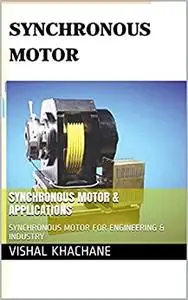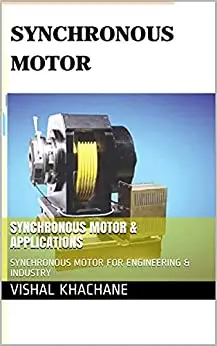SYNCHRONOUS MOTOR & APPLICATIONS: SYNCHRONOUS MOTOR FOR ENGINEERING & INDUSTRY by Vishal Khachane
English | 2021 | ISBN: N/A | ASIN: B091N6CSRY | 93 pages | EPUB | 0.24 Mb
English | 2021 | ISBN: N/A | ASIN: B091N6CSRY | 93 pages | EPUB | 0.24 Mb
LEARNING OBJECTIVES :-
Synchronous Motor-General
➣ Principle of Operation
➣ Method of Starting
➣ Motor on Load with Constant
Excitation
➣ Power Flow within a
Synchronous Motor
➣ Equivalent Circuit of a
Synchronous Motor
➣ Power Developed by a
Synchronous Motor
➣ Synchronous Motor with
Different Excitations
➣ Effect of increased Load with
Constant Excitation
➣ Effect of Changing Excitation
of Constant Load
➣ Different Torques of a
Synchronous Motor
➣ Power Developed by a
Synchronous Motor
➣ Alternative Expression for
Power Developed
➣ Various Conditions of Maxima
➣ Salient Pole Synchronous Motor
➣ Power Developed by a Salient
Pole Synchronous Motor
➣ Effects of Excitation on
Armature Current and Power
Factor
➣ Constant-Power Lines
➣ Construction of V-curves
➣ Hunting or Surging or Phase
Swinging
➣ Methods of Starting
➣ Procedure for Starting a
Synchronous Motor
➣ Comparison between
Synchronous and Induction
Motors
➣ Synchronous Motor
Applications
A synchronous motor is electrically identical with an alternator or a.c. generator.
In fact, a given synchronous machine may be used, at least theoretically, as an alternator, when driven
mechanically or as a motor, when driven electrically, just as in the case of d.c. machines. Most
synchronous motors are rated between
150 kW and 15 MW and run at speeds
ranging from 150 to 1800 r.p.m.
Some characteristic features of a
synchronous motor are worth noting :
1. It runs either at synchronous speed
or not at all i.e. while running it main-
tains a constant speed. The only way to
change its speed is to vary the supply
frequency (because Ns = 120 f / P).
2. It is not inherently self-starting. It has
to be run upto synchronous (or near
synchronous) speed by some means,
before it can be synchronized to the
supply.
3. It is capable of being operated under
a wide range of power factors, both lag-
ging and leading. Hence, it can be used
for power correction purposes, in addi-
tion to supplying torque to drive loads.
Feel Free to contact me for book requests, informations or feedbacks.
Without You And Your Support We Can’t Continue
Thanks For Buying Premium From My Links For Support
Without You And Your Support We Can’t Continue
Thanks For Buying Premium From My Links For Support



